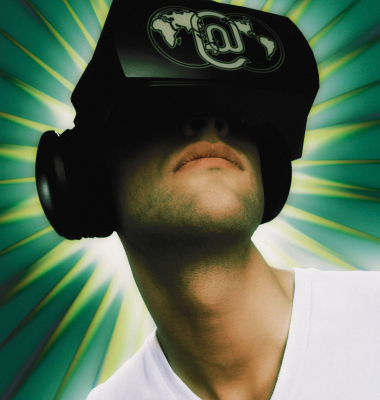Telecom & Technology Consulting

For years we’ve been hearing about virtual reality, the technology that will replicate “real life” and allow us to interact with it. Flying through space, riding a horse in the jungle, swimming in oceans with dolphins – with virtual reality just about any scenario is possible.
The technology has been in development for decades and it seems it’s recently turned a corner. We can now take mental trips with devices like Samsung Gear VR and Google Cardboard, which carry content created by the New York Times and other providers.
And like all innovations, the business community will find ways to adapt virtual reality for gains in both efficiency and profit. What might happen?
Marketing gets more wings
Let prospects head out into a virtual environment and use your product on their journey. Instead of people reading about your offering or watching a video, they can get a brand experience from anywhere.
Virtual reality can also allow more people to “attend” conferences, exposing a larger audience to your products and services. That means less travel, along with being able to avoid those conversations with fellow attendees you’d rather not have.
An easier way to keep the peace
It’s inevitable – in every office there are occasional misunderstandings and confrontations. Resolving the issue over email usually never works. But having a virtual reality talk could provide the personal connection that’s necessary while eliminating any hostile energy, real or imagined, that can come from face-to-face contact.
Expand the interview experience
Telephone or Skype interviews have become more popular for either initial screenings, or for candidates who live far away. With virtual reality companies could conduct these interviews but get a better sense of the candidate’s energy, a key factor in hiring decisions.
Improve training
Online training can be static or linear. In-person training can be inefficient and expensive. Training through virtual reality could provide a richer experience – participants can interact with the environment and other people, getting more from the training in both a qualitative and a quantitative manner.
Assess real estate from anywhere
When companies need a new office, or simply need more space, it can be essentially impossible to imagine what it will be like to work in the new space. Virtual reality lets you experience the day-to-day environment, including aspects like ceiling height, distance to the kitchen, and if the view is really as good as advertised.
More convenient company meetings
These days, with many companies composed of contractors and work-at-home employees, it’s rare that everyone’s in the office at the same time. Company meetings are difficult to pull off. But virtual reality makes it easy to bring everyone together under the same roof.
Now that virtual reality is here, corporations will soon figure out how to best take advantage of it. We look forward to seeing how it turns out – with or without the VR device.